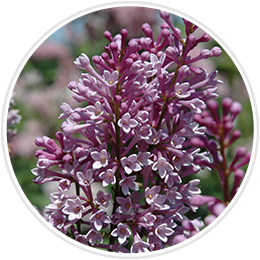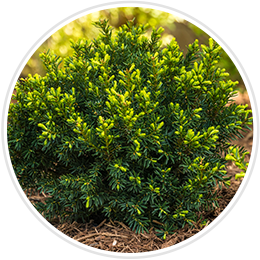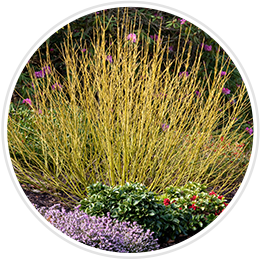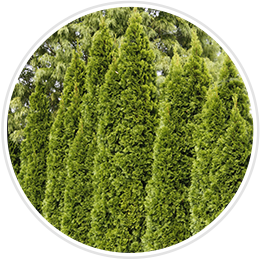Ready to achieve your hedge goals in a hurry? Our Ready, Set, Hedge!® selections have a healthy head start! Each shrub plant is nurtured in ideal soil conditions up until harvest time--for better roots and guaranteed hedge success.
Gurney's Ready, Set, Hedge!® plants are grown in the rich, healthy soil of Holland, Michigan
For decades growers have boasted over Michigan soil, and for good reason. The rare, nutrient rich sandy loam just inland from Lake Michigan, produces some of the best performing trees and shrubs you can find.
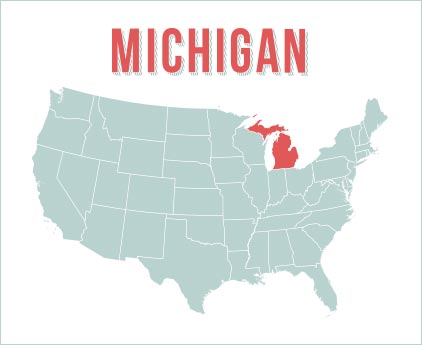
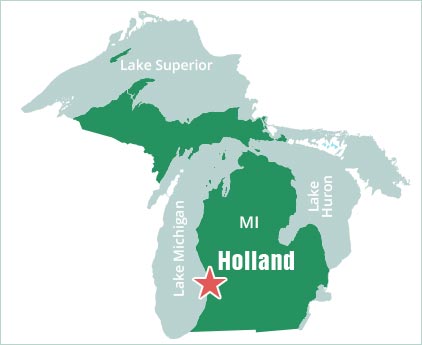
More reasons to try Ready, Set, Hedge!®
Planting sizes up to 4 ft. tall.
We have plant sizes to fit every landscape need and every budget. Our largest sizes arrive with years of growth already behind them--perfect for creating instant privacy, beauty or property boundaries.
Money-saving multi-packs.
When planning a proper hedge, consider the space you want to fill and the spread of your chosen shrub variety. Usually, multiple plants are required. We created our 3-, 5- and 10- plant bundles with this in mind--the more you buy, the more you save.
Shipped right to your door.
No need to borrow a truck or put down a tarp in the back of your SUV. No spilled dirt when the pots in the back inevitably tip over on the ride home. Our healthy shrubs ship right to your door at the perfect time for planting in your area.
Hedges from Gurney's
Gurney's Seed & Nursery Co. has proudly been one of the US's leading seed and nursery companies since 1886. Our team of horticultural experts routinely explore and test plant varieties that will appeal to long-time gardening enthusiasts and beginners alike. Gurney's horticulturists plant a variety of hedges here on our farm and study them to ensure the hedges we sell are as high-yielding, disease-resistant, and as easy and quick to plant as possible. Our hedges for sale are fast-growing and known for successful flowering.
Learn more about hedges and proper care below.
Choosing the Right Types of Hedges
To choose the right hedges for sale that best fit your preferences, you'll first need to know about the different subtypes.
Flowering Hedges
Flowering hedges offer any garden or yard vibrant color when they bloom in spring and summer. From lovely lilacs to dramatic dogwoods, these plants add personality wherever planted. Use flowering hedges to spruce up an otherwise bland area, or simply to add more beauty in your garden.
Winter Hedges
Winter can feel a bit drab after the color and vitality plants bring us throughout the rest of the year fades. Planting winter hedges, however, can keep some life around your yard or garden all year. Evergreen hedges ensure you'll always have visual interest and vegetation to fill out your space.
Pollinator-Friendly Hedges
Flowers aren't the only way to attract pollinators. Certain hedges are highly appealing to butterflies, birds, bees, and other insects. If attracting pollinators is a goal of yours, consider planting lilac hedges, cherry trees, or snowball hedges, just to name a few.
Deer-Resistant Hedges
It's a big disappoint to plant and tend to your garden only to have deer eat away at it. Keep your garden safe and flourishing by planting deer-resistant hedges. Deer are rarely interested in evergreen and deciduous hedges, so if you're concerned about them snacking on your hard work, add these plants that are almost guaranteed to remain undisturbed by deer.
Windbreaker Hedges
Wind can be a nuisance when you're relaxing in your backyard. It can also damage delicate plants and escalate your utility bills. Combat this by planting windbreaker hedges. These larger, denser plants help to block and redirect wind.
Privacy Hedges
A privacy hedge is ideal to plant around the perimeter of your property or anywhere you want a screen. This plant provides visual privacy from neighbors and passersby, as well as a sound barrier. These types of plants also prevent people and wildlife from coming onto your property.
Hedges: Getting the Most out of Your Purchase
To help your hedges flourish, there are a few things to know about their care.
Getting Started With Hedges
Once you know which type of hedges you want, look for a variety appropriate to your climate if you live in an area with more extreme weather conditions. Those further north will want to look for cold-hardy hedges, and those in hotter, dryer conditions will want to find plants that can tolerate heat and possible drought.
When to Plant Hedges
Hedges grow best when planted in cooler months, so opt to plant them in the fall. The cooler air and soil temperatures will reduce the amount of stress put on the plant, allowing roots to take better hold and become stronger. In southern areas, you may even want to wait until winter. Pick a time that is cool but far from freezing.
How to Plant Hedges
- Prep the soil. If your soil is poor, mix in compost to add nutrients to the soil and help with water retention and drainage.
- Measure your hedge plants. Check the maximum width your variety of hedge grows to and find a location where you have the space to fit the number of plants you have. Mark the width with flags or another material so you know things have been properly spaced.
- Dig a trench. Make sure your trench is 12 inches deep and roughly 20 inches wide.
- Plant your hedges. With your plant where you want it, fill in the hole with your soil. Gently cover the roots with soil, careful not to pat it down so tightly that the hedge roots can't get air.
- Water, mulch, and fertilize. Water well after planting hedges, and surround the base of the plant with one or two inches of mulch to protect the roots and retain water. Fertilize the hedges with a slow-release fertilizer to help them take off.
When to Trim Hedges
It's best to trim hedges when they're dormant, which is fall to early spring. It's critical to not prune these plants when the weather is too cold or too hot. Prune them before freezing temperatures hit, and be sure not to prune during hot, dry weather. To avoid leaf burn, choose a cool, overcast day.
How to Trim and Prune Formal Hedges
Follow these tips for trimming and pruning formal hedges:
- Use hedge shears and hand-held pruners to prune formal hedges. Make sure the tools are sharp to avoid unnecessary stress to the plant. Plan to prune with shears at least once a year. Use hand-held pruners to cut out dead or damaged branches and to thin out upper branches.
- When pruning a formal hedge, you want the base of the shrub to be wider than the top. This allows the lowest branches to receive sunlight. When the shrubs are 2-3 years old, prune them back so that new shoots develop at the base of the plant. With older shrubs, cut about one-third from the top and the sides.
- Eyeball the size and shape you want your hedge to be, and take your time in trimming off the tips. To help sunlight reach the base of your plant, cut the top portion a little shorter than the bottom. To help the shrub shed snow, shape the top of the hedge so it's slightly rounded or pointed.
Benefits of Using Privacy Hedges
Most people plant privacy hedges because they offer a sense of seclusion. You can sit outside or entertain guests without disturbing your neighbors. Planting hedges offer other benefits too.
- Hedge plants can be a sound buffer and reduce noise from passing motorists and people.
- Hedges for privacy can clearly define your property line.
- Planting small hedge plants is less expensive than installing a fence.
- Hedges can provide shade and create a restful, natural feel in the landscape.
- Planting a hedge is a great way to enhance your property's curb appeal.
Correctly Spacing Hedges
The key to an effective privacy hedge is to correctly space your shrubs. Get out your tape measure and do a bit of research before you start planting. Here is how you space shrubs for a hedge row.
Determine the mature width or spread of your shrub variety. This is listed in the plant description. Use spacing that is one foot smaller than the smallest number for mature spread. If the mature spread is 3-4 feet, use 2 ft. Measure from the center of one shrub to the center of the next. In this example, the correct spacing would be 4 ft. from the center of one shrub to the next.
If you want a hedge row in a hurry, you can start with larger plants or you can plant a double row with a staggered or zigzag placement.





 Gardens Alive! & Supplies
Gardens Alive! & Supplies





